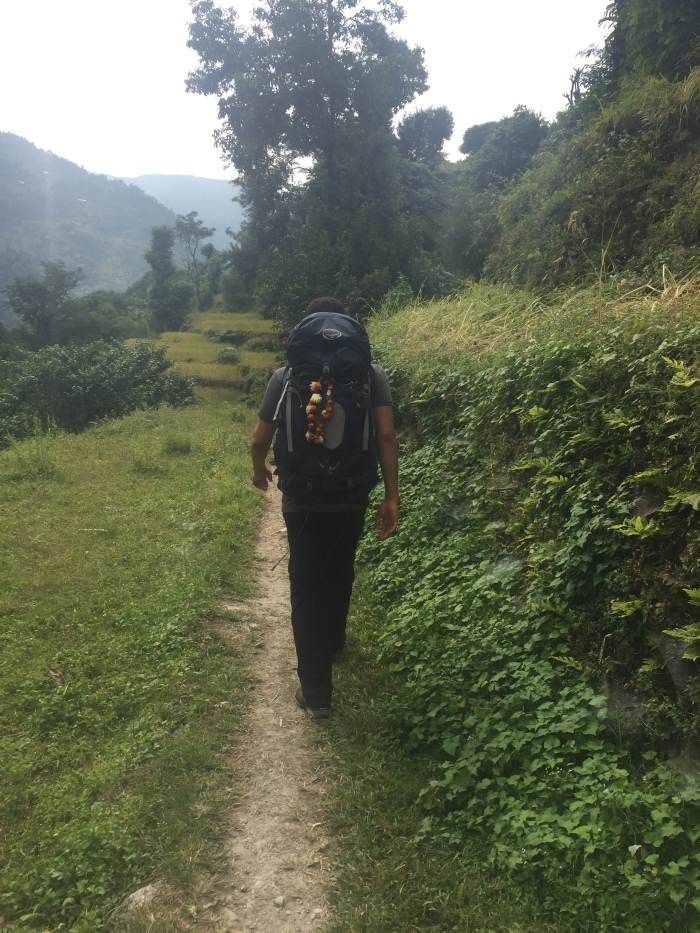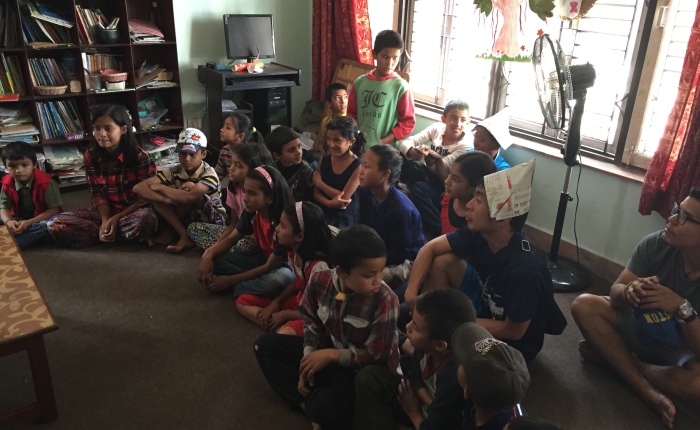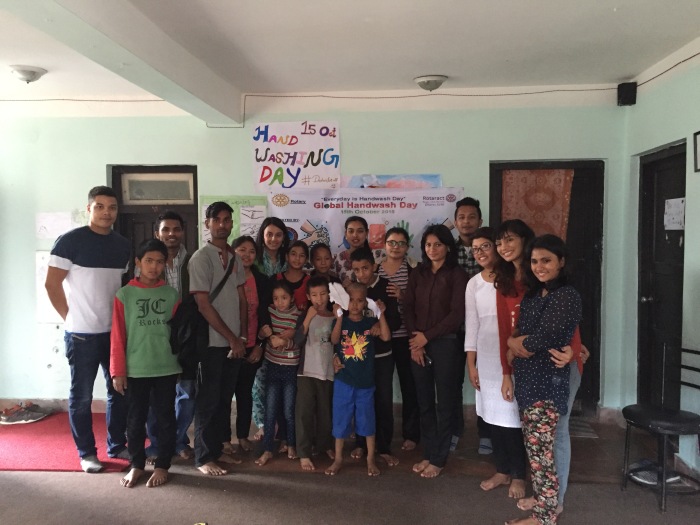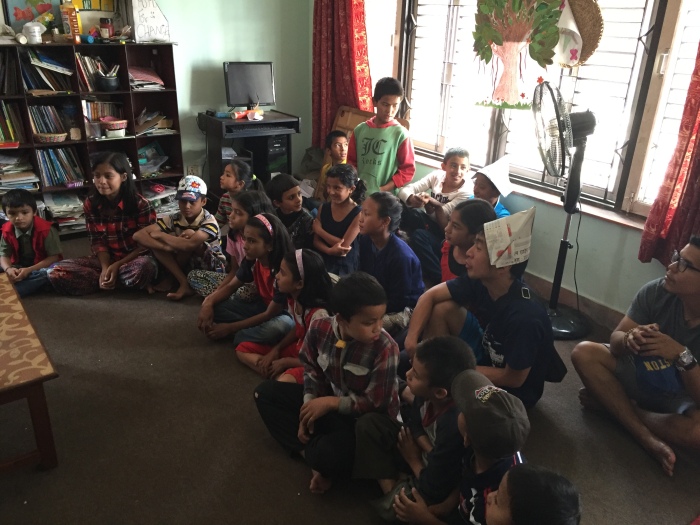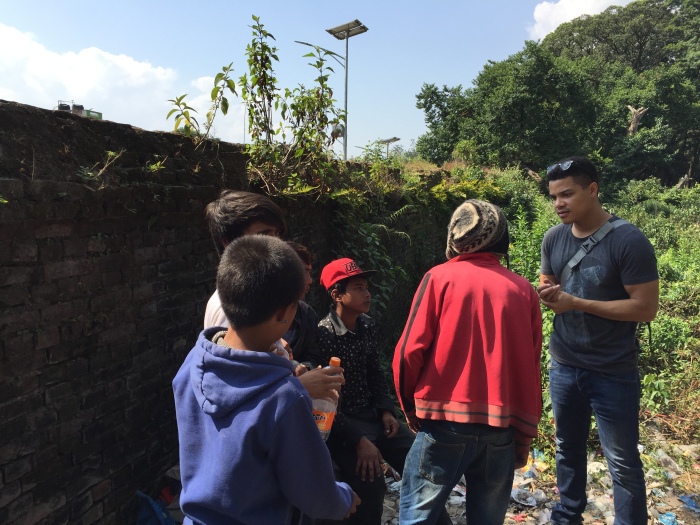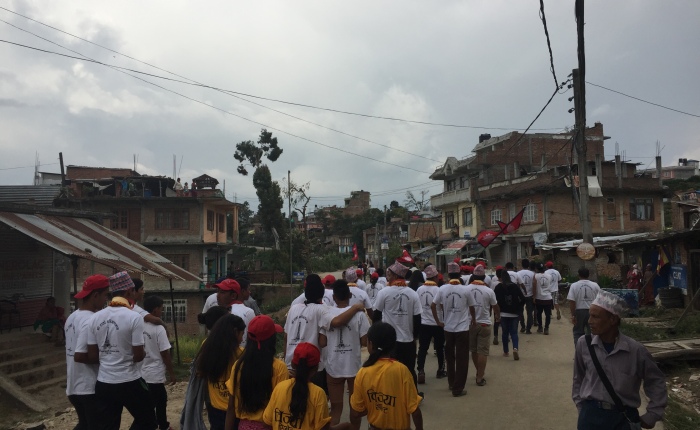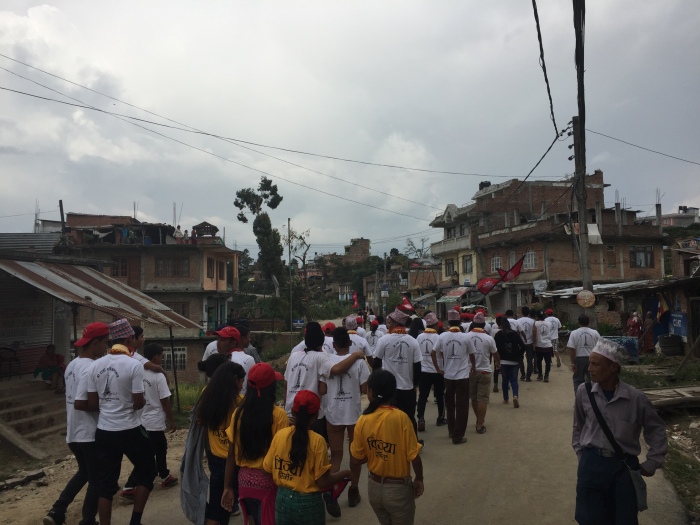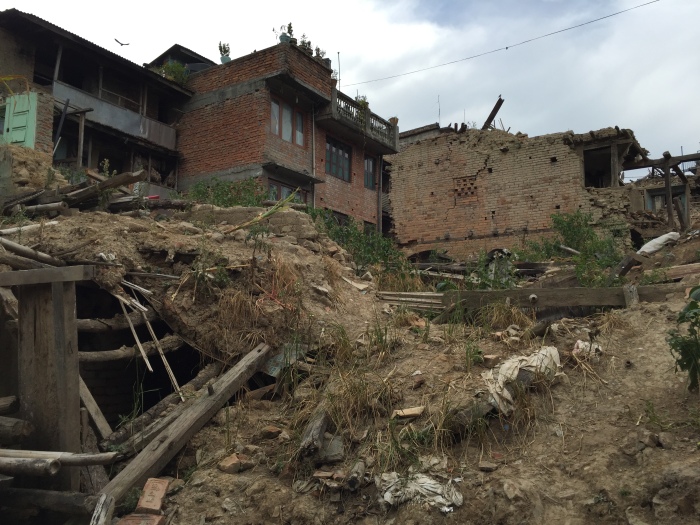I begin this blog post with a bit of a confession: I had no idea trekking was such a big deal in Nepal…
*ducks head to hide from outcry/heavy objects being thrown in disgust*
Yep, just like people who have never heard of The Lord of the Rings, there are some who don’t know how central trekking is to Nepal. I am one of those people (the latter group – for the record I’m a huge LOTR geek).
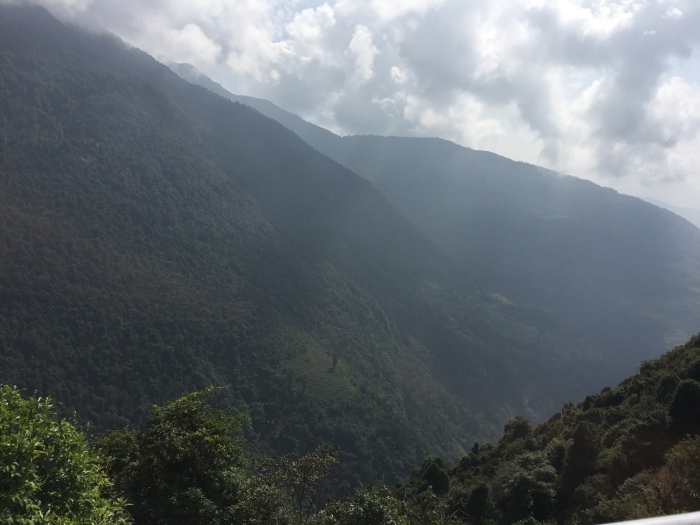
My motives for going to the wonderful country of Nepal were mainly to do some volunteering and inhale my own body weight in mo-mos. Mo-mos by the way are little steamed dumplings, renowned for their addictive properties.
It came as a surprise, then, as nearly everyone I spoke to asked me if I was going to do any trekking. The sheer number of times the pastime came up in conversation, coupled with the far-off, glint-eyed expressions most people had when they spoke about expeditions they’d been on made me reconsider my plans. And, boy, am I glad I did so.
I decided to tackle the Annapurna Base Camp route, a decision based on the length of time it would take to complete – 10 days – which I was just able to fit into my schedule by slightly extending my stay in Nepal, as well as recommendations by several experienced trekkers.
So I departed from Kathmandu to Pokhara, a chilled-out, westerner-packed town nearest to the trek’s starting point of Nayapul. The bus journey, which was supposed to take five to six hours ended up being closer to eight or nine. Owing to the double-whammy of the festival of Dashain, where everyone travels back to their family home, and a fuel crisis (see previous posts) the bus was crammed with people inside and outside as more still clung to the roof as the driver spun around the windy mountain roads.
A much-appreciated night’s rest in Pokhara was followed by a taxi then bus to Nayapul and the first steps of a long journey.
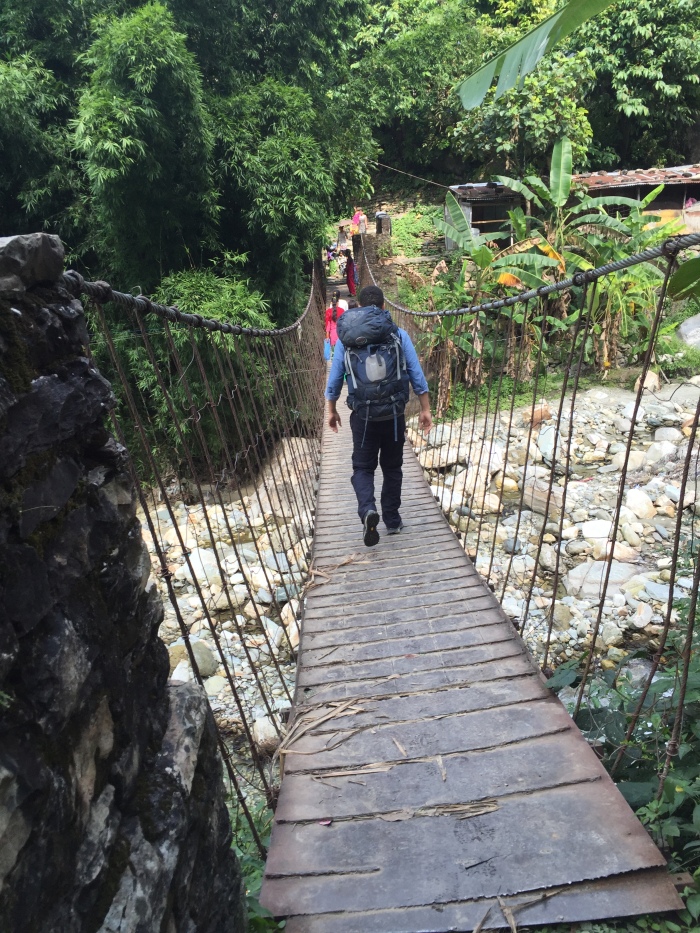
Dal Bhat Power 24 hour; outside toilet, no shower.
A key aspect to trekking is adjusting your body clock. People who like a lay-in will be in for a shock as a typical day’s itinerary consists of waking up around 5/6am ready to set-off at 6/7am (sometimes earlier), trekking until 11am/midday, stopping for lunch before continuing until about 4/5pm.
The best part of the day is seeking shelter and sustenance from one of the many guest houses dotted along the route. They are very basic with rooms consisting of a bed and, well, that’s it. The phrase “hot shower” you see advertised usually means tepid water for two minutes followed by an unsolicited ice-bucket challenge.
Most of your time is spent in the common area having dinner and discussing the day’s events with other trekkers.There’s a real sense of camaraderie and triumph-against-adversity around the dinner table and the basic conditions make it seem like you’re all on some pioneering adventure, like the Fellowship of the Ring or something (I told you I was a LOTR geek). You frequently see the same faces as you take it in turns overtaking each other along the way. The path was reportedly much quieter than usual for the time of year as many tourists had apparently been put off by the earthquakes.
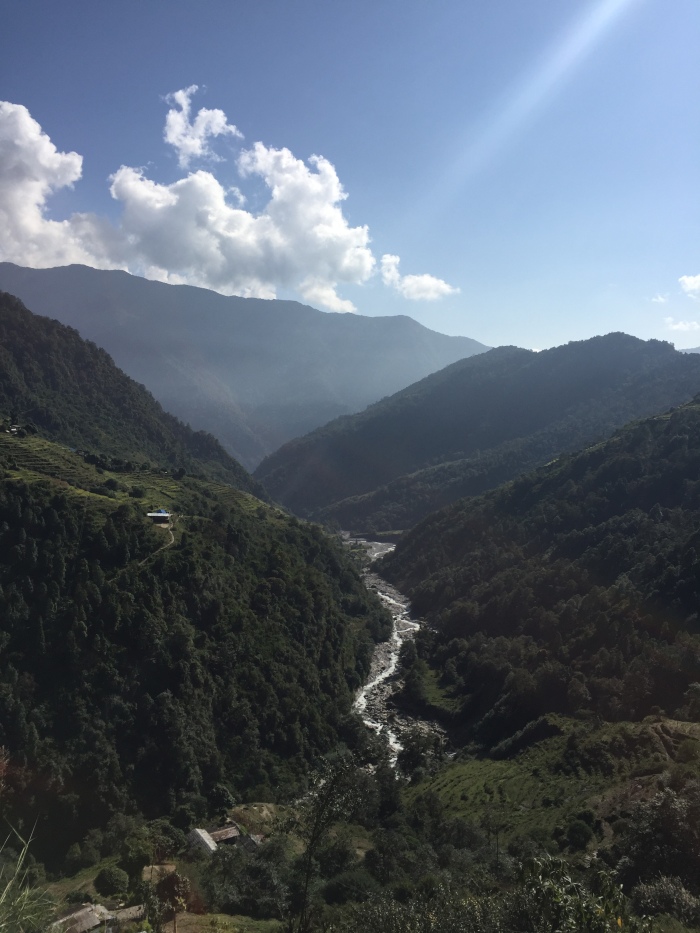
Nepali flat
It’s amazing how much energy you use up along the way. The second day alone consisted of something like 2,500 stone steps. By the evening break it felt like I’d done three million squats. Three square meals, usually consisting of calorific, oily foods like fried rice or noodles are burned off very quickly. The higher you go, the scarcer ingredients like beef and pork become as it gets more difficult to transport things that aren’t readily available on the mountain pass – there’s no such thing as popping to the shops at 3,000m+ above sea level.
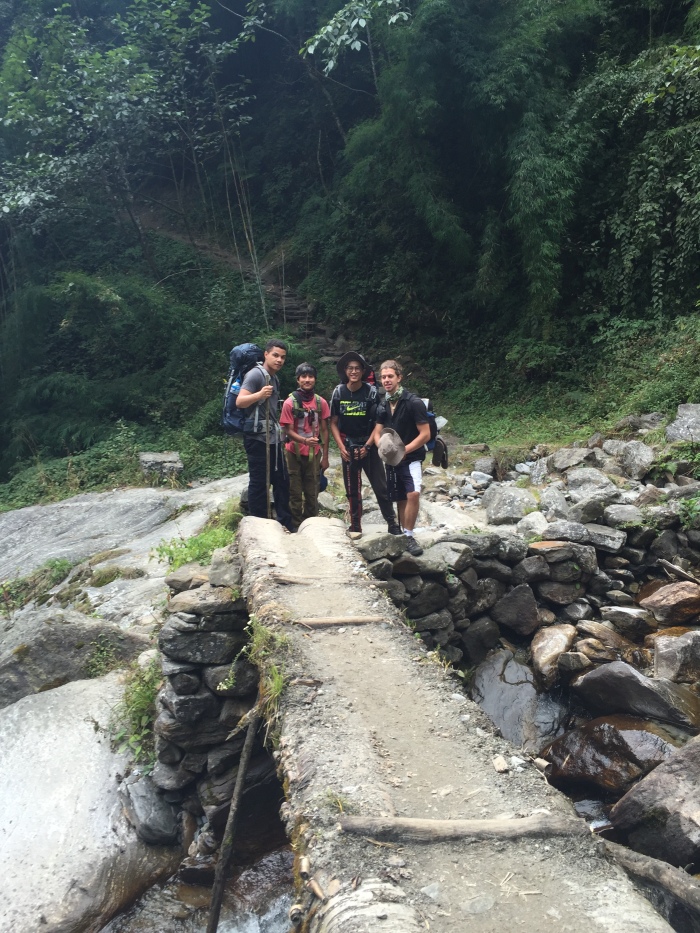
Nepali porters carrying impossibly large packs of food and other necessities up and down makes you question what you’re seeing. *Am I going mad or did I really just see that guy casually whizz past me carrying boxes twice his size, attached by a strap to his head, all while wearing flip-flops and not breaking a sweat?* They are truly a sight to behold.
Highlights of the journey up to the base camp include getting up before sunrise at the fairly large settlement of Ghorepani to complete a half-hour climb up Poon Hill.

Your reward for the pre-dawn perambulation is an amazing Himalayan vista.
It goes without saying, almost, that the views you see along the way are breathtaking. There are also rope bridges and precarious wooden bridge crossings which enable you to act out any Indiana Jones or Gandalf “you shall not pass” fantasies you may, or may not, have.

As base camp gets ever-nearer, the temperature begins to drop. An ice-cave between Himalaya and Machhapuchhre Base Camp is definitely worth checking out.
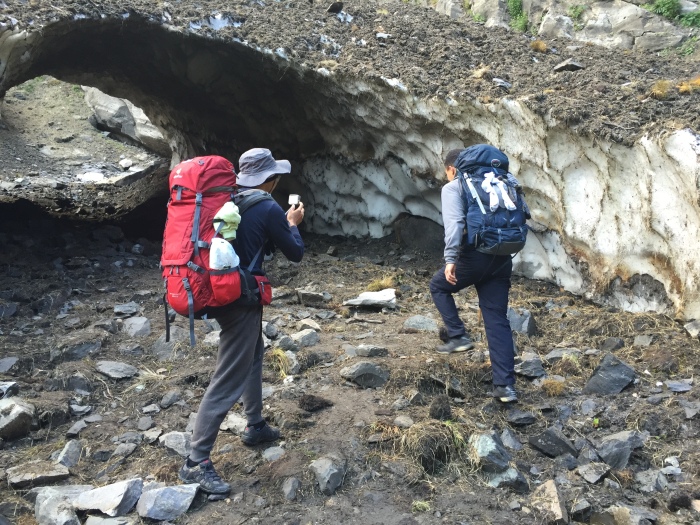
Machapuchhre is a mountain which faces Annapurna and is just as magnificent. It’s name loosely means “fishtail mountain” owing to the fact its twin peaks make it look like… you guessed it, a fish’s tail. It is a holy mountain to Buddhists and its forbidden for anyone to climb it so, officially, no one has ever stood on its summit.
A little further on from Machhapuchhre is Annapurna Base Camp, the highest point you’ll reach at some 4,100m above sea level. It’s an eerie and cold place. Stone piles are scattered on a rocky patch near the main buildings, some in tribute to people who have died trying to climb the notoriously deadly peak.
If you stand overlooking a wide gully where a glacier used to be, the clouds make it feel like you’re at the edge of the world, staring into the abyss.
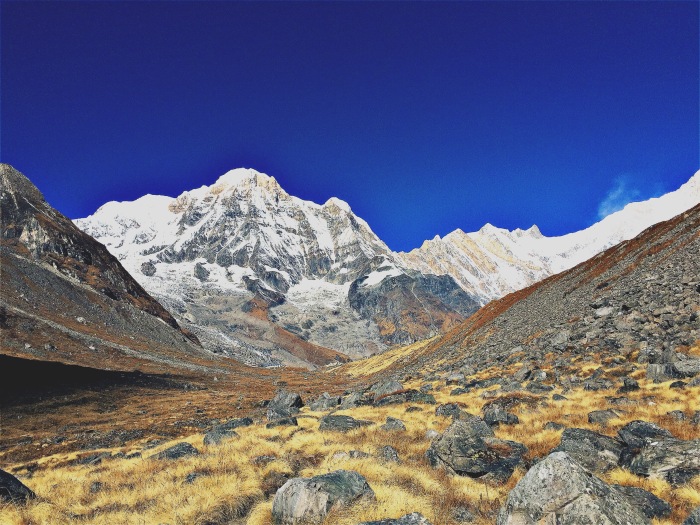
The camp sits in a bowl, surrounded on all sides by snowy mountains. You can hear the thunder-like noise of avalanches and the crack of glaciers calving.
To experience the best part about being there, however, you have to wait for nightfall. As the sun set it turns Machhapuchhre into a golden-tipped wonder, a view enhanced even further during my stay by the appearance of a full moon. There are very few moments in life that make you say “wow” involuntarily, and this was one of them.
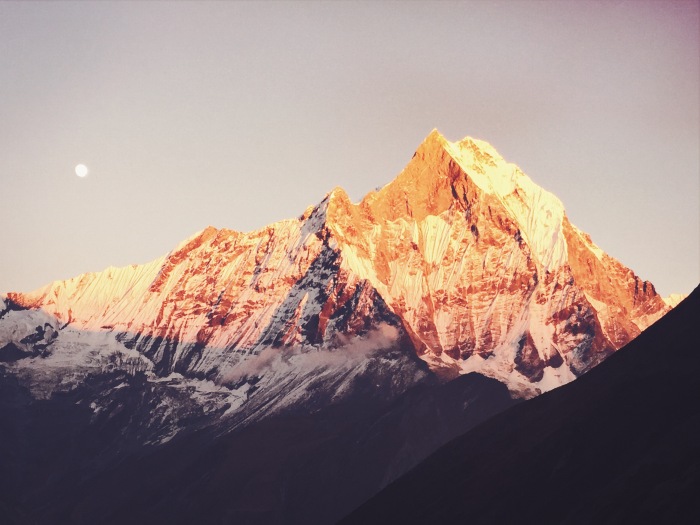
With the promise of an even more majestic sight, my fellow trekkers and I set our alarms for 3am and got up to do some star gazing. Luckily, the night sky was perfectly clear.
Far above any light pollution, I have never seen the stars so bright in my life. One glaring red light puzzled me. Was it a plane? A weather balloon? No, I was informed it was actually Mars, as clear as day. And visible close-by, there was Venus. Meanwhile the moon was shining as bright as a flood light, casting everything around in a pale, soft glow. If anything made traipsing up stone after endless stone, this was it.
The descent
The way back down was not without its own charms. These included a relaxing soak in the hot springs near Jhinudanda although watch out for leeches – I got bitten by two of the suckers. Our hosts at Sinuwa also treated us to a traditional dance in which we were encouraged to take part.
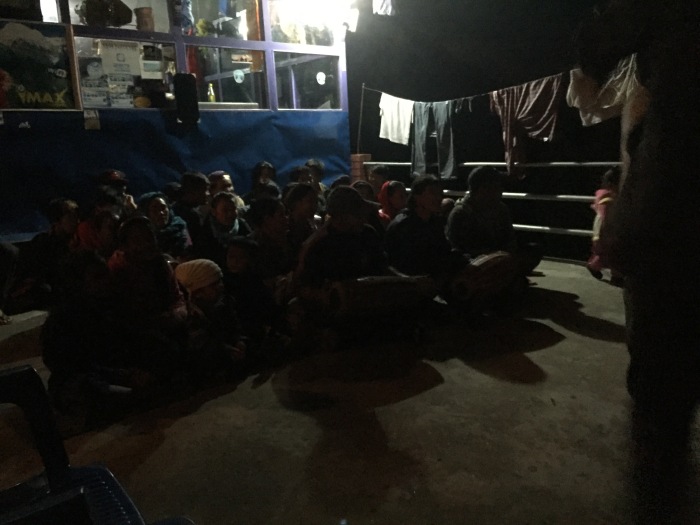
You are retreading much of the same path for the descent, something you would avoid doing the much longer but much more varied Annapurna Circuit route if anyone is considering going on a trek.
Arriving back in Pokhara and normality, some fellow trekkers and I experienced a culture shock as we were blown away by luxuries such as sit-down toilets, hot showers that were actually hot and of course meals with meat.
All in all getting there and back again is an experience I’ll never forget (last Tolkien reference, I promise).
